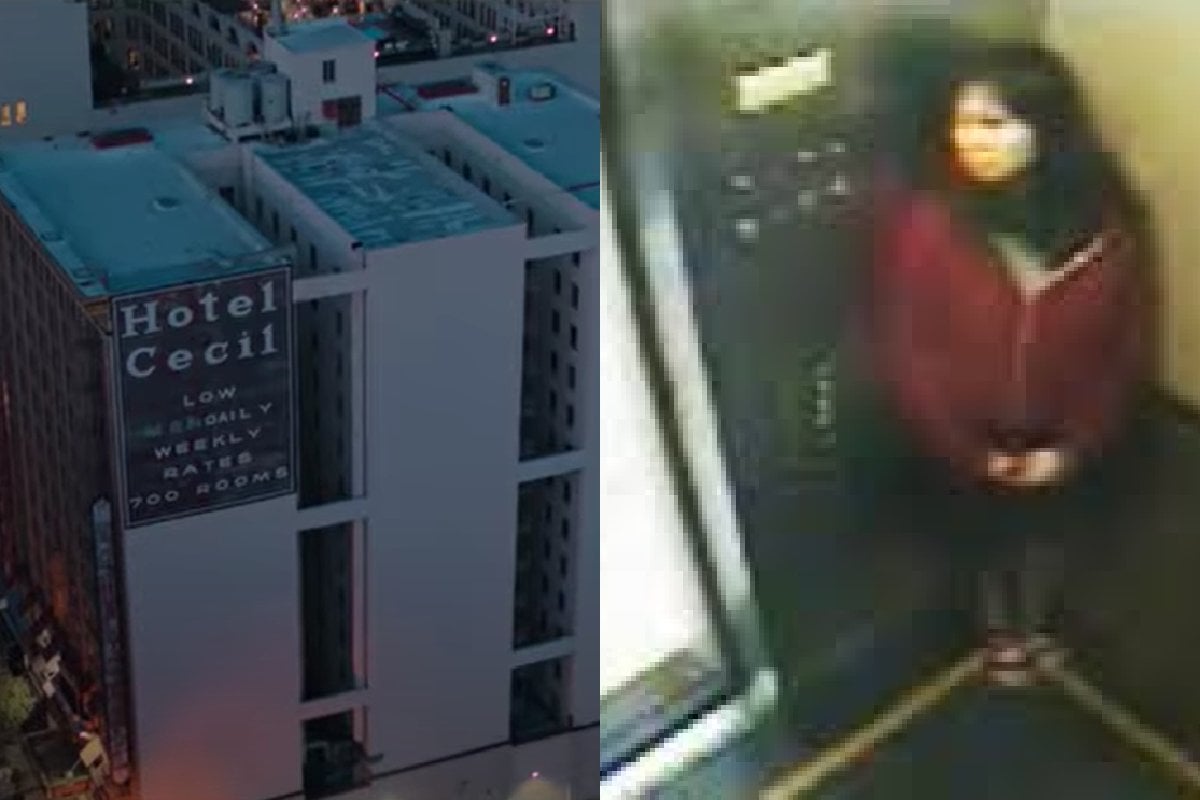
Stepping into the lobby of the Cecil Hotel is like stepping back in time into old school Hollywood.
With its Doric columns, stained glass windows and marble floors, you can imagine Hollywood starlets and big time movie producers sipping on martinis in the hotel bar.
And they did, for a short time.
Now the demise of the once iconic hotel and its grisly past is being explored in a new Netflix docuseries called Crime Scene: The Vanishing at the Cecil Hotel.
Watch the trailer for Netflix's Crime Scene: The Vanishing at the Cecil Hotel. Post continues below.
The 700-room hotel was built in downtown LA in the 1920s and was marketed as a luxury hotel for businessmen visiting the city.
For a few years, it was a favourite among the Hollywood set, especially because it was the first hotel in the city to welcome Alcoholics Anonymous meetings.
Then the Great Depression hit and LA locals down on their luck set up camp in Skid Row, the city's most notorious slum, which surrounded the hotel. Residents who couldn't afford the hotel's room rate slept on the pavement outside and in the nearby bushes.
As the city's homelessness and crime rates increased, the hotel became synonymous with poverty and accidentally became the poster child for the darker side of Tinsel Town. Its Hollywood shine was quickly replaced with grime.
